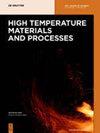基于离散概率模型的多组分可燃气体爆炸危险源识别方法
IF 1.5
4区 材料科学
Q4 MATERIALS SCIENCE, MULTIDISCIPLINARY
引用次数: 0
摘要
摘要针对传统可燃气体爆炸危险性识别方法灵敏度低、准确度低的问题,引入离散概率模型,设计了一种多组分可燃气体爆炸危害性识别方法。选择Fem3模型对多组分可燃气体的扩散模式进行分析,得到了扩散速度的计算公式。通过试验观察了多组分可燃气体的爆炸极限,得到了多组份可燃气体爆炸浓度的上限值。根据爆炸的特点,设计了一种多组分可燃气体爆炸危险性识别装置。采用离散概率模型识别多组分可燃气体的爆炸危险性。实验结果表明,该方法大大提高了识别的灵敏度和准确性,充分说明了该方法具有较好的检测效果。本文章由计算机程序翻译,如有差异,请以英文原文为准。
Discrete probability model-based method for recognition of multicomponent combustible gas explosion hazard sources
Abstract Aiming at the problems of poor sensitivity and low accuracy of traditional combustible gas explosion hazard identification methods, the discrete probability model was introduced to design a multicomponent combustible gas explosion hazard identification method. Fem3 model is selected to analyze the diffusion mode of multicomponent combustible gas, and the calculation formula of diffusion velocity is obtained. The explosion limit of multicomponent combustible gas was observed by means of test, and the upper limit of explosion concentration of multicomponent combustible gas was obtained. According to the characteristics of explosion, a multicomponent combustible gas explosion hazard identification device is designed. The discrete probability model is used to identify the explosion hazard of multicomponent combustible gas. Experimental results show that the proposed method greatly improves the recognition sensitivity and accuracy, which fully shows that the proposed method has a better detection effect.
求助全文
通过发布文献求助,成功后即可免费获取论文全文。
去求助
来源期刊

High Temperature Materials and Processes
工程技术-材料科学:综合
CiteScore
2.50
自引率
0.00%
发文量
42
审稿时长
3.9 months
期刊介绍:
High Temperature Materials and Processes offers an international publication forum for new ideas, insights and results related to high-temperature materials and processes in science and technology. The journal publishes original research papers and short communications addressing topics at the forefront of high-temperature materials research including processing of various materials at high temperatures. Occasionally, reviews of a specific topic are included. The journal also publishes special issues featuring ongoing research programs as well as symposia of high-temperature materials and processes, and other related research activities.
Emphasis is placed on the multi-disciplinary nature of high-temperature materials and processes for various materials in a variety of states. Such a nature of the journal will help readers who wish to become acquainted with related subjects by obtaining information of various aspects of high-temperature materials research. The increasing spread of information on these subjects will also help to shed light on relevant topics of high-temperature materials and processes outside of readers’ own core specialties.
 求助内容:
求助内容: 应助结果提醒方式:
应助结果提醒方式:


